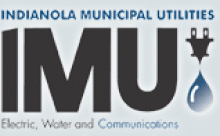
Fast, affordable Internet access for all.

We have covered developments in the town of Indianola, Iowa, where the community decided to build their own network in 1998. The original purpose for investment was to use the network to enhance public safety and increase efficiency with SCADA applications. In 2005, however, the network began offering telecommunications services to local businesses. As of October, Indianola Municipal Utilities (IMU) began offering fiber-to-the-home to residents as it gradually begins expanding the use of its fiber asset.
You can now hear firsthand about the network, its history, and how the municipal utility navigated the journey to its next-generation open access network. Craig Settles interviewed Todd Kielkopf, General Manager of IMU, in an August Gigabit Nation podcast. The two discuss IMU's evolution since 1998. They also talked about the unique advantages that exist when a community considering network infrastructure investment already has a municipal utility in place.
Kielkopf tells how the driving factor for the fiber installation was to allow easier management and communication between utilities. When a 1990 franchise agreement with MediaCom was about to expire, the city investigated options. Hopes were that that the city could build a fiber network and MediaCom would offer services over that network, but that vision was never embraced by MediaCom.
Iowa law allowed the city to hold a referendum asking residents for permission to provide telecommunications services through the municipal utility's network. The referendum passed and they created a five year financial plan. Financing was with taxable and tax exempt bonds. The electric utility would build and own the network and a new telecommunications utility would license to a private partner that would offer retail services. Now, IMU and Mahaska Communication Group (MCG) have an agreement whereby MCG provides retail services over the network. While the agreement is not exclusive, no other providers currently use the network.
Kielkopf discusses three distinct phases in the development of the network's current status. First the network connected schools, libraries, government entities, and other anchor institutions. Next, IMU began connecting and serving businesses. Now, IMU is in the third stage of connecting homes. Along the way, says Kielkopf, the utility took its time and proved to the community that the investment was well spent and that IMU could manage the resource wisely.
Money saved on customers' telephone service, the willingness to work to finance installation, and treating customers well, contributed to IMU's positive reputation in the community. Accordingly, the community continues to support IMU's ambitions and goals for new uses of the network. The main objective for the network has been to provide a public necessity while paying off debt service and earning enough to maintain and improve the network. So far, IMU has met that goal.
In addition to cost savings and increased accessibility for Indianolans, IMU works with the local community college as part of an economic development program. Additionally, IMU is planning slow expansion and is committed to finding ways to simplify utilities and save energy for customers with the fiber network.

Kielkopf and Settles also discussed challenges from opposition to community owned networks and the search for local champions to lead efforts. Kielkopf notes that being proactive and knowing where hot button issues may exist before they ignite can make or break efforts.
He also stresses how Indianola has consciously tried to be different than surrounding communities as a way to attract talent and economic development. As one of many bedroom communities in the Des Moines area, Indianola competes with other similarly sized towns for new jobs, residents, and other resources. Kielkopf sees a direct connection between the network and what Indianola has to offer its residents, two thirds of which commute to Des Moines every day. Businesses (and now residents) can't get this caliber of affordable, reliable, and fast broadband in local areas served by the private sector.
Lastly, Kielkopf notes that successfully managing utilities depends on strong research, testing, and growth from an already existing knowledge base. He suggests that communities recognize strengths and weaknesses and capitalize on them both when venturing into the realm of broadband. The strategy has proved successful for IMU, its partners, customers, and the community.
The new residential service from IMU and its partner MCG includes triple play service of 25/25 Mbps Internet, unlimited local calls, and 105 of the most popular digital television channels for $99.95. For an additional $10, residents can upgrade to 100/100 Mbps. Stand alone Internet service is available for as low as $39.95 for 25/25 and double play packages (data and phone) are also available for as little as $49.95. MCG provides a broad range of bundling variety and 25/25 is available for as little as $5 per month in some packages.
Hear more details yourself in the interview.
